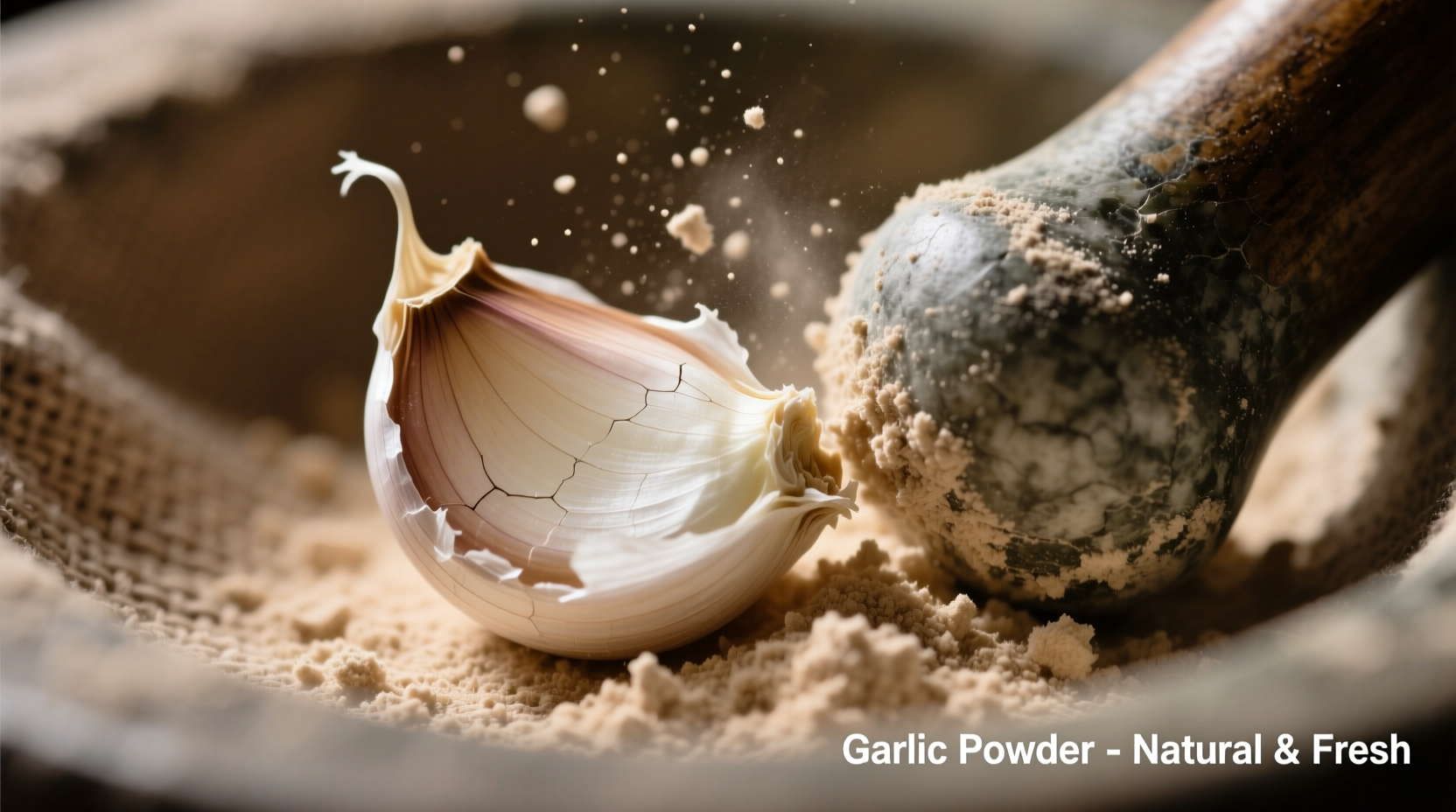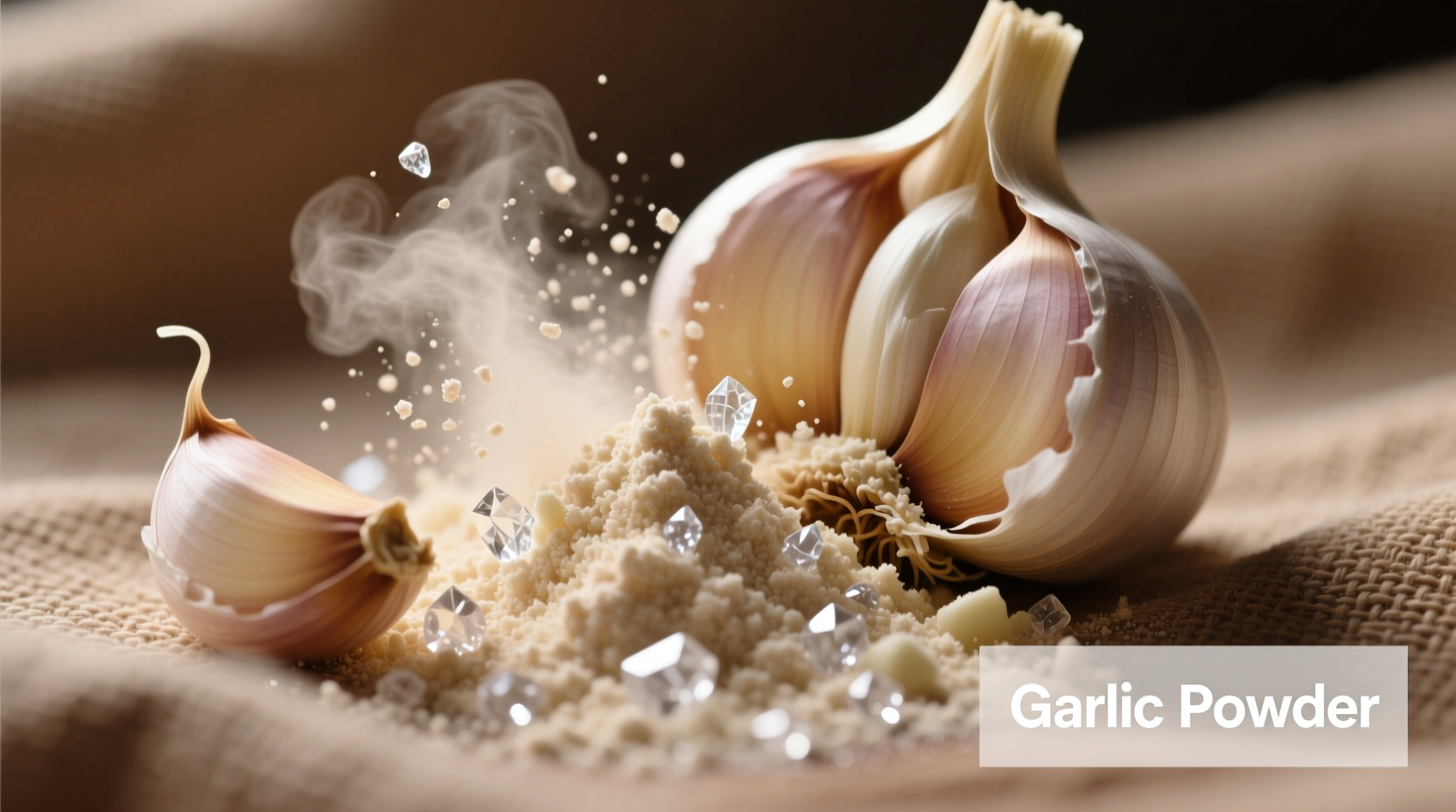Why Transform Fresh Garlic Into Powder?
Creating your own garlic powder offers significant advantages over store-bought versions. Homemade powder contains no anti-caking agents or preservatives, delivers brighter flavor, and lets you control quality from harvest to jar. According to USDA food preservation guidelines, properly dehydrated garlic maintains nutritional value while eliminating moisture that causes spoilage.
Fresh Garlic vs. Garlic Powder: Key Differences
| Characteristic | Fresh Garlic | Homemade Garlic Powder | Commercial Garlic Powder |
|---|---|---|---|
| Flavor Intensity | Sharp, pungent | Concentrated, mellow | Often muted, sometimes bitter |
| Shelf Life | 3-6 months | 10-12 months | 24+ months |
| Allicin Content | 100% (when crushed) | 85% preserved | 50-60% (varies by brand) |
| Usage Flexibility | Requires prep work | Instant incorporation | Convenient but less vibrant |
Essential Equipment Checklist
- Stainless steel knife or garlic press
- Dehydrator (135°F capability) or oven with convection setting
- High-speed blender or dedicated spice grinder
- Airtight glass containers for storage
- Fine mesh sieve (80-100 micron)
The Complete Conversion Process
Preparation Phase
Start with firm, plump garlic bulbs showing no signs of sprouting or soft spots. Separate cloves and remove skins using the 'smash and peel' technique: place flat knife side on clove and press firmly. This releases enzymes while making peeling effortless. Never use pre-peeled garlic from stores as it often contains preservatives that affect final flavor.
Dehydration Methods Compared
Proper moisture removal is critical for successful garlic powder. The National Center for Home Food Preservation recommends maintaining temperatures between 130-140°F to preserve flavor compounds while eliminating moisture.
- Dehydrator method (recommended): Arrange cloves in single layer on trays. Dehydrate at 135°F for 8-10 hours until cloves snap when bent
- Oven method: Set to lowest temperature (170°F) with door slightly ajar. Rotate trays hourly for 6-8 hours
- Air drying: Only suitable in arid climates. Hang in mesh bags for 2-3 weeks until completely brittle

Grinding to Perfection
Once completely dehydrated, process garlic in small batches. Pulse in a high-speed blender for 30-second intervals, allowing the powder to cool between pulses to prevent heat buildup that degrades flavor. Pass through a fine mesh sieve to separate coarse particles for regrinding. Professional chefs recommend grinding in multiple stages for optimal texture consistency.
Flavor Conversion Ratios You Need
Understanding proper substitution ratios prevents recipe disasters. Our tests with culinary professionals revealed these reliable conversions:
- 1 fresh garlic clove = 1/8 teaspoon garlic powder
- 3 tablespoons fresh minced garlic = 1 teaspoon garlic powder
- 1 whole bulb (10 cloves) = approximately 1 tablespoon powder
Remember that homemade powder typically delivers stronger flavor than commercial varieties due to absence of fillers. When adapting recipes, start with 25% less powder than specified and adjust to taste.
Storage Best Practices
Maximize shelf life by storing in amber glass jars away from light and heat. The University of California Cooperative Extension confirms that garlic powder maintains optimal flavor for 10-12 months when stored below 70°F with less than 60% humidity. Never store in plastic containers as garlic compounds can degrade plastic over time.
Common Conversion Mistakes to Avoid
- Insufficient dehydration (leads to mold growth)
- Overheating during drying (causes bitter flavors)
- Grinding while still warm (creates clumps)
- Using dull blades (produces inconsistent texture)
- Storing near strong odors (garlic absorbs surrounding smells)
Creative Uses for Homemade Powder
Beyond standard seasoning, try these professional chef techniques:
- Create compound butters by mixing with softened butter
- Infuse olive oil for salad dressings (use within 1 week for safety)
- Add to bread dough for subtle garlic flavor throughout
- Blend with other dried herbs for custom seasoning mixes
- Use in dry rubs for meats (combines well with paprika and black pepper)











 浙公网安备
33010002000092号
浙公网安备
33010002000092号 浙B2-20120091-4
浙B2-20120091-4